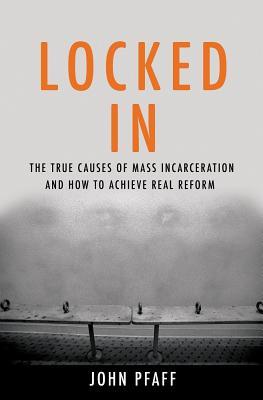Book Review: Locked In
Published:
John Pfaff’s Locked In is a clear-eyed, evidence-based examination of America’s criminal justice system. Pfaff argues that mass incarceration is not primarily driven by nonviolent crimes, long sentences, or private prisons. The real driver of prison growth is the prosecutor. A variety of poor institutional incentives and political pressures empower prosecutors to send more people to prison. Reforms need to reign in the power and discretion of prosecutors.

Here’s the paperback and audiobook.
Utility: ⭐⭐⭐⭐⭐ (5/5)
Writing: ⭐⭐⭐⭐ (4/5)
Locked In is a must-read for anyone who cares about the criminal justice system.
Pfaff’s analysis is packed with evidence and logical reasoning. He is deeply familiar with the data on incarceration, as well as the history and context behind prison growth. Pfaff is keenly aware of the fallacies of the Standard Story and guards himself against making overconfident conclusions, frequently conceding points to his opponents and qualifying recommendations with words like “might” and “likely.” He even spends entire sections explaining limitations to his own arguments. As a result, his conclusions and recommendations appear imminently reasonable and well-considered. Only a couple minor points appear unsupported, such as his passing endorsement for body cameras, which have a questionable record; these are barely noticeable.
The writing is great. I was especially impressed at his ability to explain technical quirks. Here’s an example. In this paragraph, Pfaff explains why rising prison populations could be driven by tougher sentences for minor offenders, even amidst apparently falling sentence lengths:
A simple example can illuminate the problem. Assume that, at first, a state admits one person to prison every year for fraud; the state focuses solely on serious fraudsters, and they all spend three years in prison. Obviously, the average and median times spent in prison by someone convicted of fraud is three years. Later on, the state becomes more aggressive in punishing fraud. It continues to admit one serious fraudster to prison each year, but now for four years instead of three; but it also now sends two lower-level fraudsters—who previously would have received probation at most—to prison for one year each. The median time served in prison now drops from three years to one year, and the average time drops from three years to two years, even though everyone is serving more time in prison (the serious sentence rose from three years to four, the minor sentence from zero years to one). Everyone is serving more time, but the sentences all look shorter, because of the people convicted of the less serious charge now showing up in prison.
So clear! And obvious in retrospect. It takes a really talented author to consistently and wonderfully elucidate details like these.
Notes
- Mass incarceration is a serious problem in the United States, and an unusual one at that. The country incarcerates 1.5 million people, with state and local governments spending over $200 billion annual on criminal justice. Prison populations were ordinary (by an international standard) during the 60s and 70s, but rapidly rose through the 80s and 90s and into the twenty-first century.
- Now is a prime moment for bipartisan criminal justice reform, but leading advocates are solving the wrong problem. According to the Standard Story, prison growth is driven by nonviolent drug offenders who face longer incentives and are sent to corrupt private prisons. But the war on drugs is not responsible for most of the increase in prison population. Even after considering secondary effects of drug arrests and violence, the story cannot account for the equally large increase in violent, non-drug offenders in prison. Nor is prison growth explained by private prisons or longer sentences—public prisons house the vast majority of prisoners, and sentence lengths have stayed roughly constant.
- Prosecutors decide who gets charged with what. Their decisions are not only unregulated, but also largely unmonitored. The story of prison growth is one of prosecutors choosing to send more and more people to prison.
- Multiple levels of institutional incentives conspire to send more people to prison. Politicians prefer to be tough on crime because the political cost of mistakenly releasing a prisoner is much higher than the cost of imposing longer sentences. County prosecutors and politicians also have a perverse incentive to send people to state prisons instead of local jails, since the costs of imprisonment are passed on to the state.
- Any serious decarceration effort must decrease sentences for violent offenders. Advocates for nonviolent offenders often undermine their own goals by trading lighter sentences for drug offenders for harsher punishments for violent offenders. Releasing violent offenders earlier will increase crime and decrease safety. But so will breaking up families and stripping prisoners of employment potential. Safety should be viewed as a question of costs and benefits.
